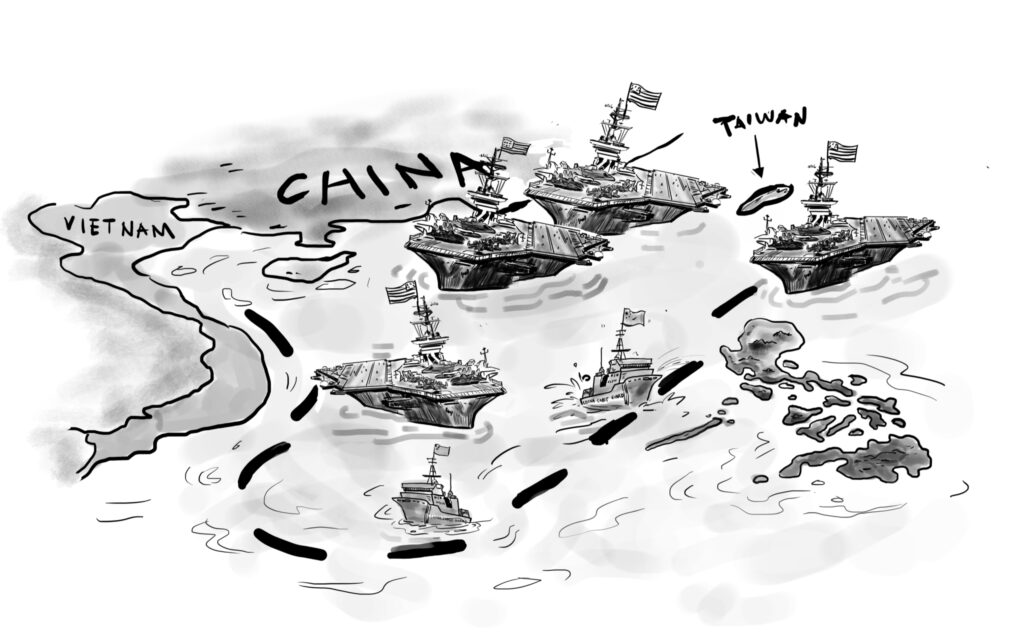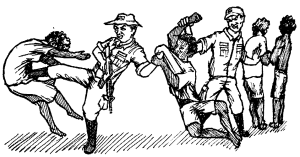Massive US military presence in the South China Sea


Every week, Philippine news is filled with the presence of Chinese fishing, naval and coast guard vessesls in some parts of its exclusive economic zone (EEZ) and throughout the South China Sea (SCS). On the other hand, the huge presence of US military forces in these waters is rarely reported, except when there are large-scale war games with the Armed Forces of the Philippines. Furthermore, the prolonged presence of American forces in the region and the ongoing resistance of Asian people have not merited news coverage.
Since 1943, the US 7th Fleet has been permanently stationed in Southeast Asia. Its operations cover the Indian Ocean and West Pacific, including the South China Sea. It was stationed at Subic Bay in Zambales from 1945 until the Philippine Senate abrogated the Military Bases Agreement on September 16, 1991. The base of the 7th Fleet was moved to Yokosuka, Japan despite widespread opposition from the Japanese people.
Since the 2010s, the US has gradually shifted 60% of its naval assets to Asia to use against supposed “anti-access/area denial” (A2/AD) operations of its imperialist rival China. Under the guise of the rights and freedoms of all nations to navigation, it pushed the militarist “freedom of navigation operations” (fonops) to assert the uninterrupted entry and exit of its large warships, submarines and bombers in the EEZs of countries surrounding the SCS. This includes the Taiwan Strait which China considers its maritime territory. The US claims the right of its warships to “innocent passage” through this narrow channel, creating tension with China. The US insists on these broad rights not only in the seas, but also in the airspace.
Starting in 2020, the US deployed three more large ships in Asia for A2/AD operations in the SCS. This year, the US has conducted 15 voyages through the Taiwan Strait, accompanied by Canadian ships.
In 2023, the US carrier strike groups (CSG) USS Ronald Reagan, USS Nimitz and USS Carl Vinson sailed simultaneously in the SCS. (A CSG is composed of an air craft carrier and 5-6 smaller naval vessels, with a total crew of up to 7,500.) Later last year, the USS Abraham Lincoln sailed here. They all passed through the Bashi Channel between Batanes and Taiwan six times, deliberately sailing the ocean within the 9-dash line claimed by China.
From northern Luzon, they sailed toward the Balabac Strait in Palawan, to the northern part of the waters forming the boundary of the EEZ of Malaysia and Indonesia before returning to the Bashi Channel. The previous three weeks to one-month deployment at the SCS became two weeks to 48 days. Other US ships sailed through the Taiwan Strait six times.
These ships, accompanied by four surveillance vessels, two amphibious ready groups and three giant oceanographic survey ships, spent a total of 314 days in the SCS. It has also deployed more than 10 nuclear-powered submarines carrying nuclear weapons. One of them, the USS Kentucky armed with nuclear missiles, was met with protests when it docked in South Korea on July 17, 2023.
US bomber and reconnaisance flights also form part of the fonops. By 2023, the US had flown at least 20 B-52Hs from its Guam base. It had also reportedly flown surveillance planes from Japan, South Korea and Clark Airbase in Pampanga 1,000 times. China reported that 100 of these flew at the edge of its territorial airspace.
The US also operates its advanced MQ-4C Triton unmanned aerial vehicles (UAVs) from its drone base in Okinawa, Japan. Residents of Okinawa strongly opposed the deployment of these drones on their island, citing the high potential of air accidents involving such UAVs.













